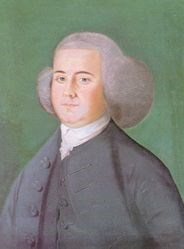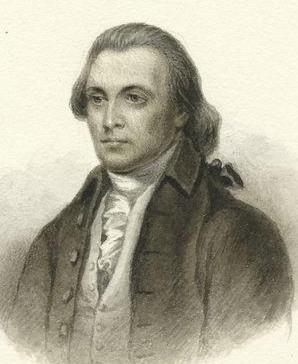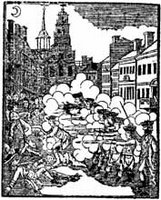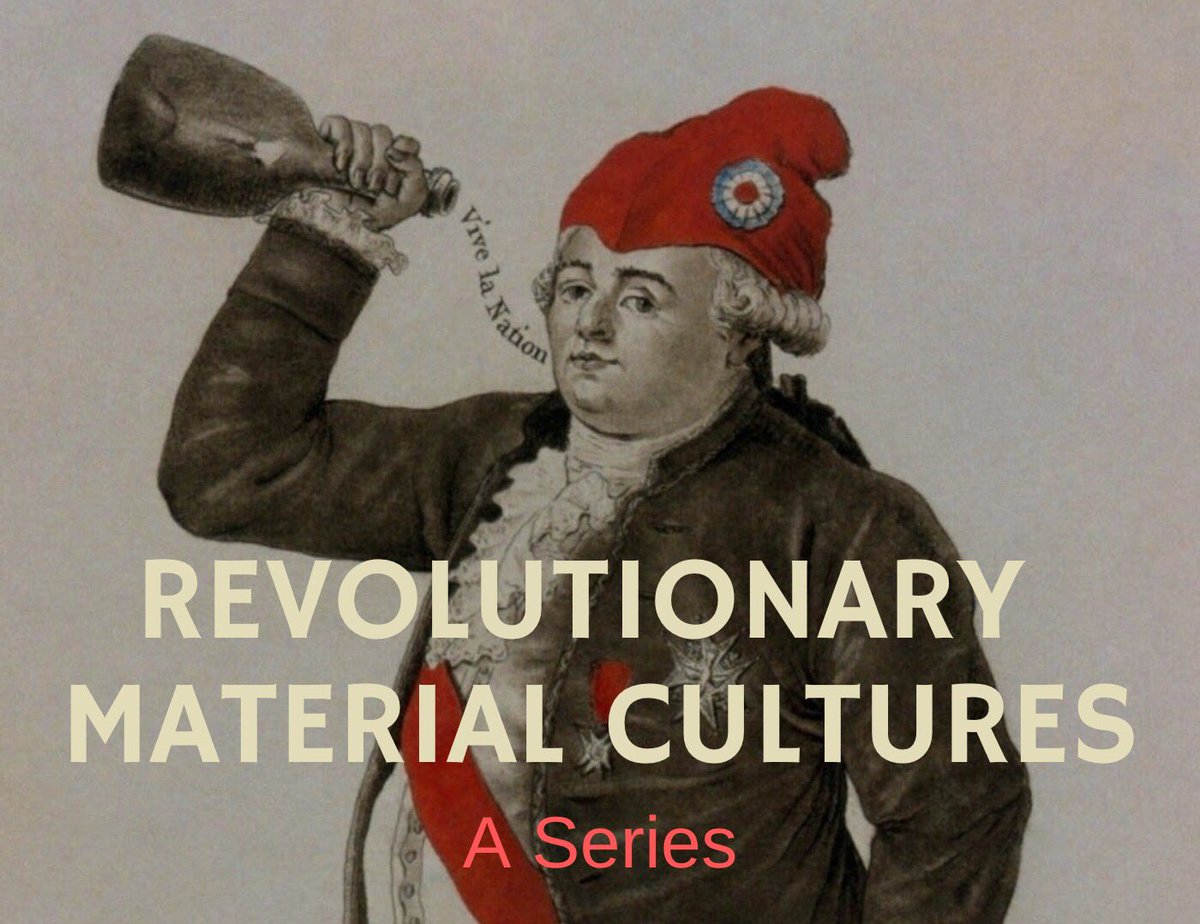“The Tendency and Design of the Letters”
The record doesn’t show whether Samuel Adams did the reading as the assembly’s clerk, but he certainly orchestrated the moment.
Members noted that the authors of those letters included Lt. Gov. Andrew Oliver, Gov. Thomas Hutchinson, Customs Commission Charles Paxton, and Admiralty court judge Robert Auchmuty. All royal appointees who had advocated accepting Parliament’s new taxes and other laws.
The representatives decided to make themselves into “a Committee of the whole House” to discuss what to do next, then broke for midday dinner.
At three o’clock the members returned to their chamber. Speaker Thomas Cushing stepped down from the chair, and member John Hancock took his place as chair of the committee of the whole. At the end of the discussion, Hancock put forward this report:
That it was the Opinion of the Committee, that the Tendency and Design of the Letters read in the Forenoon and committed to their Consideration, was to overthrow the Constitution of this Government, and to introduce arbitrary Power into the Province.The men in the chamber approved that accusatory statement by a vote of 101 to 5. The next morning, they decided, they would choose a committee of nine to make a formal response to the letters.
All that happened on a Wednesday. Two print shops in Boston were preparing newspapers to be published on Thursday morning.
Richard Draper’s Boston News-Letter had detailed reports on the opening days of the legislative session, including the house’s vote to form a committee of correspondence and the Council’s reply to the governor’s opening address. (Ordinarily the two houses would reply together, but this year the house had declined.) The News-Letter had no mention of the letters.
Isaiah Thomas’s Massachusetts Spy, on the other hand, laid out the Whig line:
For several days past some extraordinary discoveries have been talked of, which were expected to amaze the whole province. Hints have been thrown out, that the characters of some men in power would appear infamous to the highest degree; all seemed to be a general surmise and expectation, until yesterday about eleven o’clock before noon, when the galleries in the Commons House of Assembly, were ordered to be cleared of all present.Way to raise expectations, Mr. Thomas.
This confirmed the general opinion, and we are well informed, that very important matters will soon transpire, which will bring many dark things to light—gain many proselytes to the cause of freedom—make tyrannical rulers tremble, and give occasion for the whole people to bless the providence of God, who causeth the wicked man to fall into the pit he hath digged for another.
COMING UP: More maneuvers around secret letters.



















